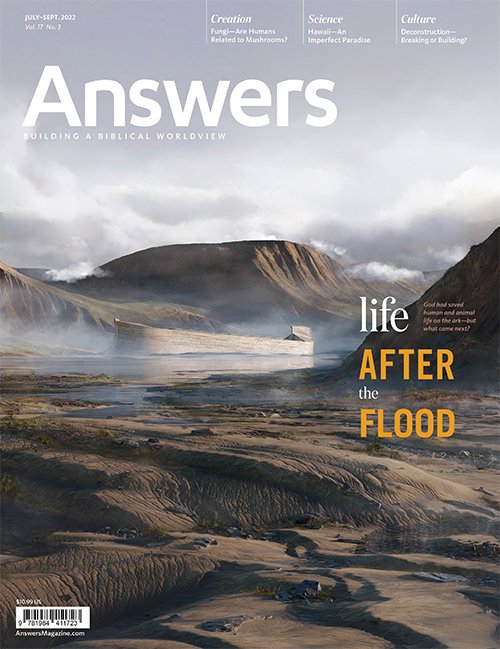Relying on Relics
Religious Relics
Should we depend on religious relics to confirm God’s Word?
For centuries, millions of pilgrims have traveled to the Vatican, the Holy Land, and other distant places to see what they believe to be holy relics. Modern jet travel has made it easy to view what are claimed to be St. Peter’s chains, John the Baptist’s head, remnants of Christ’s manger, the Apostle Thomas’ finger, and, perhaps most famously, the image of Christ’s crucified body on the Shroud of Turin.1
In my travels throughout the Middle East and nearby countries, I have witnessed pilgrims treating relics as sources of mystical blessing, as if God would count their veneration to them as righteousness. Others treat relics as idols, as if being in their presence confers mystical powers. In a recent visit to a church in Larnaca, Cyprus, which purportedly contains some of the bones of “the man who died twice” (Lazarus), I saw people worshipfully kissing the reliquary (container) holding the bones. A few days later in Armenia, inside a museum near Mt. Ararat, I saw gawkers venerating alleged pieces of Noah’s ark and Christ’s cross.
Another group believes these relics help prove the Christian faith to be true. Of course, an authentic piece of Christ’s cross or a chunk of wood from Noah’s ark would be a remarkable archaeological find and worthy to be displayed in a museum. But those who seek to use these relics as proof of Scripture’s veracity must consider whether the Christian faith needs to be verified by relics from Bible times.
Does Relic Equal Relationship?
Numbers 21 records the sad account of the children of Israel making an idol out of a man-made object. God had told Moses to make a bronze serpent to protect the Israelites from an infestation of poisonous snakes. Once the threat was over, the Israelites kept that bronze item not as a remembrance of God’s provision and salvation, but as an object of worship. Under Hezekiah, the bronze snake was broken into pieces (2 Kings 18:4). He understood that the bronze snake itself possessed no magical power.
Similarly, the ark, the cross, and other objects were man-made and didn’t spring directly from God himself. Being in the presence of such relics does not mystically make a person more pleasing to God or help him become more spiritual, even though he may be emotionally moved. In fact, venerating such objects—or worse, making idols of them—violates scriptural commands (Exodus 20:3; Isaiah 42:8).2 Rather than searching out God by visiting relics housed in monasteries, churches, and museums, people are to worship God in spirit and truth (John 4:24), even if the relics might be authentic.
Since the first centuries following Christ’s ascension, relics began attracting the attention of religious seekers. Often scientific testing proves that such items are not authentic. But that hasn’t stopped people from vainly hoping to receive a special blessing from these relics—perhaps especially from those relics supposedly associated with Christ himself.
- Section of Christ’s Umbilical Cord
Archbasilica of St. John Lateran, Rome - Swaddling Clothes
Dubrovnik Cathedral, Croatia - Crown of Thorns and a Holy Nail
Formerly displayed at Notre-Dame Cathedral in Paris - Pieces of the Cross
Displayed in various locations around the world. John Calvin purportedly said, “If we were to collect all these pieces of the true cross exhibited in various parts, they would form a whole ship’s cargo.” - A Cloth Stained with Jesus’ Blood
Basilica of the Holy Blood, Bruges, Belgium
The Ark as a Relic
Other self-described Christians are interested in using relics as supposed proofs of Christianity’s validity. Since the 1800s, “arkeologists,” as they have been dubbed, have led several expeditions on a hunt for Noah’s ark or its remnants. Every few years, someone claims to have found the remains of Noah’s ark on Mt. Ararat, instigating a media frenzy.3
In 2021, news reports announced the possible discovery of the ark, including one Christian Post headline that blared, “3D Scans Show Boat-like Formation Matching ‘Biblical’ Description of Noah’s Ark.”4 The articles reported that using ground-penetrating radar, researchers had found a boat-shaped rock formation on Mt. Ararat with dimensions close to the biblical ark.5
But most of these “arkeologists” may be looking in the wrong place. Genesis says the ark landed “on the mountains [plural] of Ararat,” referencing a wide region, not specifically what we call Mt. Ararat today. Mt. Ararat as the landing spot poses some issues.
First, Mt. Ararat is a volcano, formed after the landing of the ship. Second, even if Mt. Ararat were the actual resting place, the ark would have probably been buried under volcanic ash over the years. Therefore, we do not expect the ark or sections of it to have survived for the 4,350 or so years after the flood.
Still Not Convinced
Finding the remains of Noah’s giant ship or pieces of the cross would certainly be the greatest discovery of the twenty-first century. However, such discoveries would merely confirm what the Bible says, not prove its accuracy.
Furthermore, such discoveries would likely not convince many people of the Bible’s accuracy. Today, people willfully ignore the mountain of evidence for Noah’s global flood, such as rock layers and fossils around the world. Such people suppress the truth in unrighteousness and will attempt to explain away the evidence because their hearts don’t want to accept the truth. After all, Jesus said people wouldn’t believe even “if someone should rise from the dead” (Luke 16:31)—and that’s what happened after his resurrection.6
Believing God’s Words
God can use apologetics and evidence such as archaeological finds to open hearts and minds to the gospel. Indeed, finding the ark would create opportunities for countless gospel conversations. But our hope shouldn’t be in relics to convince skeptics to accept the flood account or the crucifixion. Rather, we should trust the absolute truth of God’s eternal Word (Psalm 119:89), including the historicity of Genesis. We know Noah’s ark existed. How? Because God’s Word records it as an actual ship—one that mercifully saved Noah’s family and thousands of creatures.
Answers Magazine
July–September 2022
God had saved human and animal life on the ark—but what came next?
Browse IssueFootnotes
- For a summary of the Shroud claim, see Ken Ham and Bodie Hodge, “Problematic Apologetics,” Answers 4, no. 2 (2006), https://answersingenesis.org/apologetics/problematic-apologetics/.
- While some religious leaders might deny holding an official position on whether the veneration of relics compels God to work in certain ways, in practice, many pilgrims are expecting a special favor from God. Their church leaders apparently do little to discourage that belief.
- Further analysis of these claims reveals either a misinterpretation of the evidence or outright fraud.
- Anugrah Kumar, Christian Post, September 28, 2021.
- Far from a new find, the Durupinar location was first proposed as an ark site in 1959 and has been continually refuted by Christians/creationists who believe God’s Word and would be thrilled to find the ark’s actual remains.
- Perhaps people will dismiss such a find as a mere replica, built years after Noah’s flood by people who believed an ancient flood myth.
Recommended Resources

Answers in Genesis is an apologetics ministry, dedicated to helping Christians defend their faith and proclaim the good news of Jesus Christ.
- Customer Service 800.778.3390
- Available Monday–Friday | 9 AM–5 PM ET
- © 2025 Answers in Genesis





